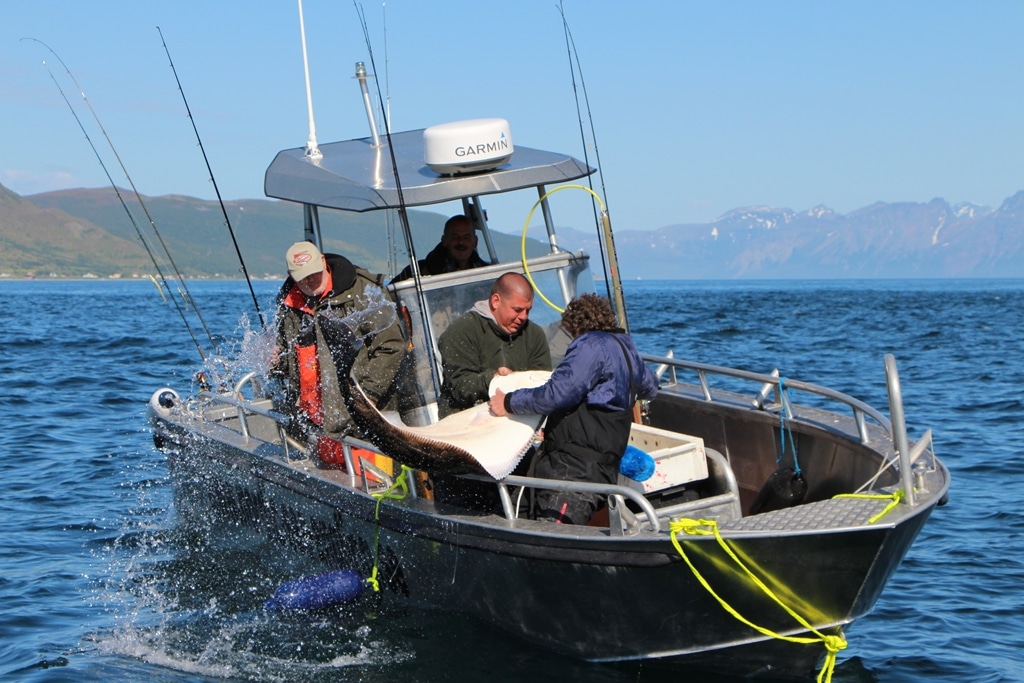
Mention fishing the Atlantic off Norway, and heavy rods with heavy metal pilk jigs are likely to come to mind for many anglers. Effective? Yes, it still is. But fun? That’s all relative. I would say fishing up there using rubber shad tails and much lighter tackle is both far more fun and much more effective. That’s true for the famed oversized Atlantic cod of these water but also the many other interesting game fish to be caught in the extremely fish-rich waters of Norway.

March and April are famous months for producing huge numbers of big skrei cod, those coming down from the Barents Sea to spawn in the fertile waters of northern Norway. As you might expect, this attracts thousands of anglers each year. Find the right spot and you can haul aboard one big cod after another. Fat 50 – to 70-pound fish are no exception during this period.
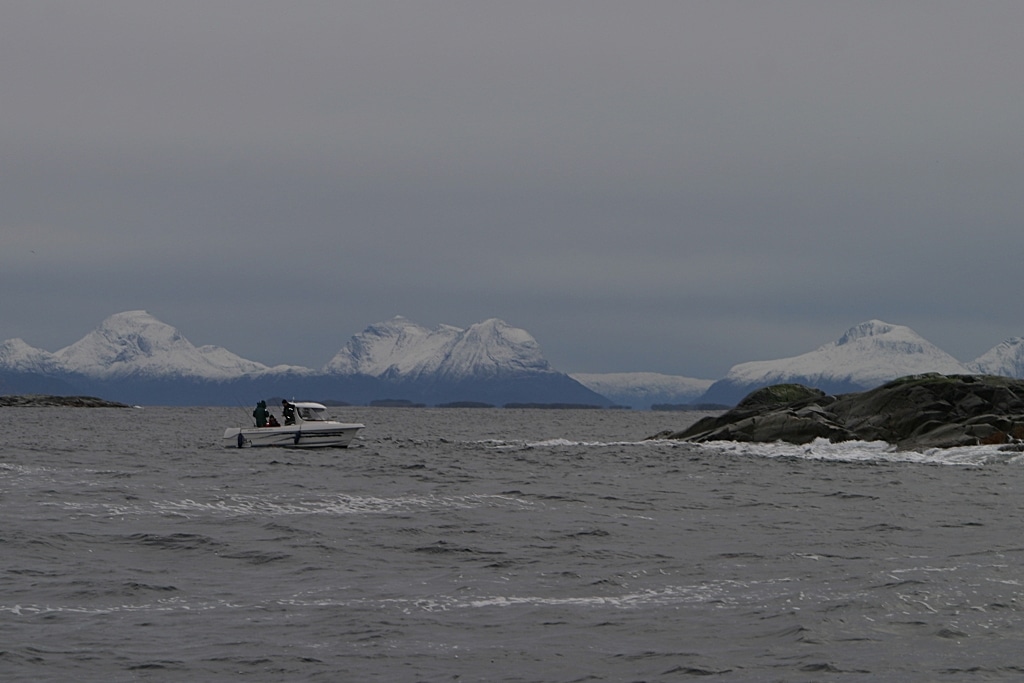
But a big downside is that fishing is done quite often in rough (and cold) conditions, the days are still short, and apart from (very) big cod there isn’t much else to catch.
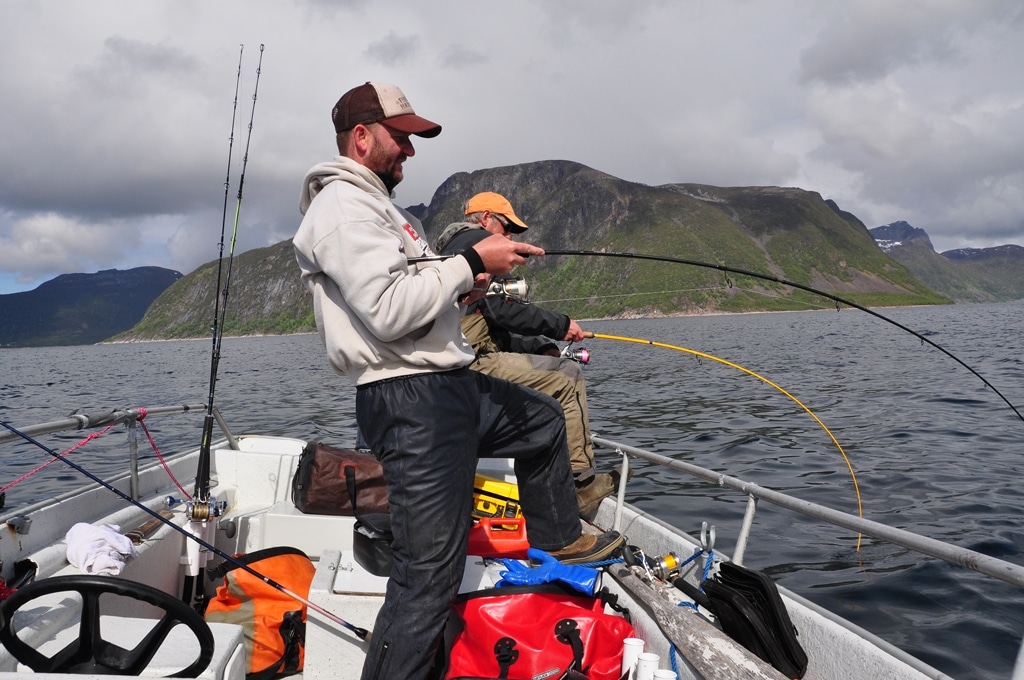
By the end of May, the last skrei cod returned to the north, but this is the start of my favorite fishing season in Norway. From June into August, you have nearly 24 hours of daylight and can fish pretty much anytime, but you can also expect to catch many species: cod of course, but also coalfish, pollack, haddock and halibut. Andy you can catch them on light spinning tackle of the sort you’d normally use for fishing fresh water.

With a medium, high-quality spinning outfit spooled with 30-pound braid or so, you can catch the biggest cod and coalfish and even large halibut if you’re patient and have good line capacity. You can fish even lighter, down to 12- to 20-pound test, to have even more fun. But doing so will depends how deep you have to fish and how strong the current runs. The big advantage light braids offer is the use of much, much lighter metal or lead-head jigs, which help offer a natural presentation.

Many anglers still think that fishing for cod and halibut has to be done close to the bottom, but often the opposite is the case in Norway’s deepwater fjords and off its rugged coast. Most fish here prey on schools of herring or small sei (coalfish) at varying depths over the entire water column. This can be very close to surface (and often is late in the day). Find the baitfish and you will find the predators that hang around these sometimes-huge schools. If you only fish near bottom, as a lot of people using heavy jigs still do), you’ll miss not only the majority of fish, but most likely the bigger ones.

A great advantage of fishing with shad tails and swimbaits is that you can fish much more slowly, and heavy currents are not needed to present your bait in an attractive way. Also, in addition to fishing vertically, you can also cast out a shad tail and fish it back to the boat at an angle, covering more water while presenting your bait in a much more natural way. The tail of shad will swing enticingly in even a modest current. Even with a rod in a holder, many times a tail will have enough wiggle to get bitten.
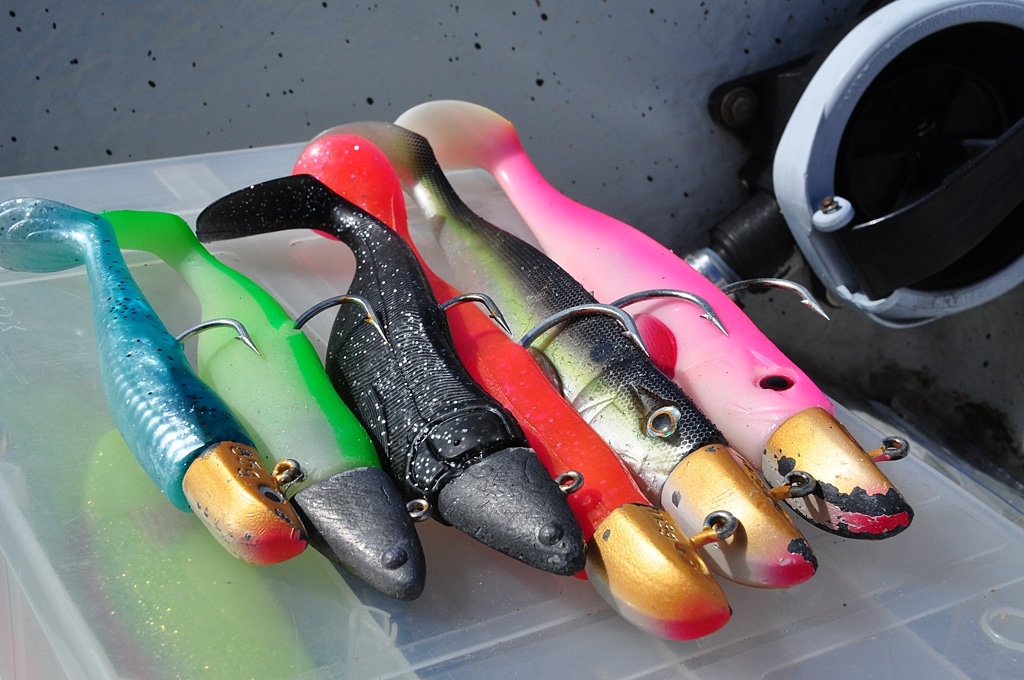
A reel-and-pause retrieve is often a deadly effective way of enticing strikes. When it stops swimming, a swimbait looks like a wounded fish. Suddenly speeding up, as well as suddenly slowing the retrieve, can also be very effective.

While big tides help make fish feed more actively, they can cause too fast a drift, leaving you with very little control over your lure and reducing your time in the right area. To control and slow the drift, a large drogue (or sea anchor) is essential. Rental fishing boats along the Norway coast are usually fine fishing machines and well equipped but don’t come with drogues, so bring one yourself; it’s one of the most important keys to success.

A good fish-finder/chart-plotter unit is something no successful angler here can do without to reveal schools of baitfish and interesting features like underwater plateaus or steep ledges, as well as indicating direction and velocity of one’s drift.

For most anglers, Atlantic cod represent the prime target, and the teeming waters of Norway hold them in unbelievable numbers. Cod of 20 to 50 pounds are not at all unusual anytime of the year for those who know where/how to fish them, as noted, often in midwater around baitfish schools. Look for underwater plateaus in 150 to 300 feet and surrounded by deeper water; most likely you’ll find the bigger cod there.
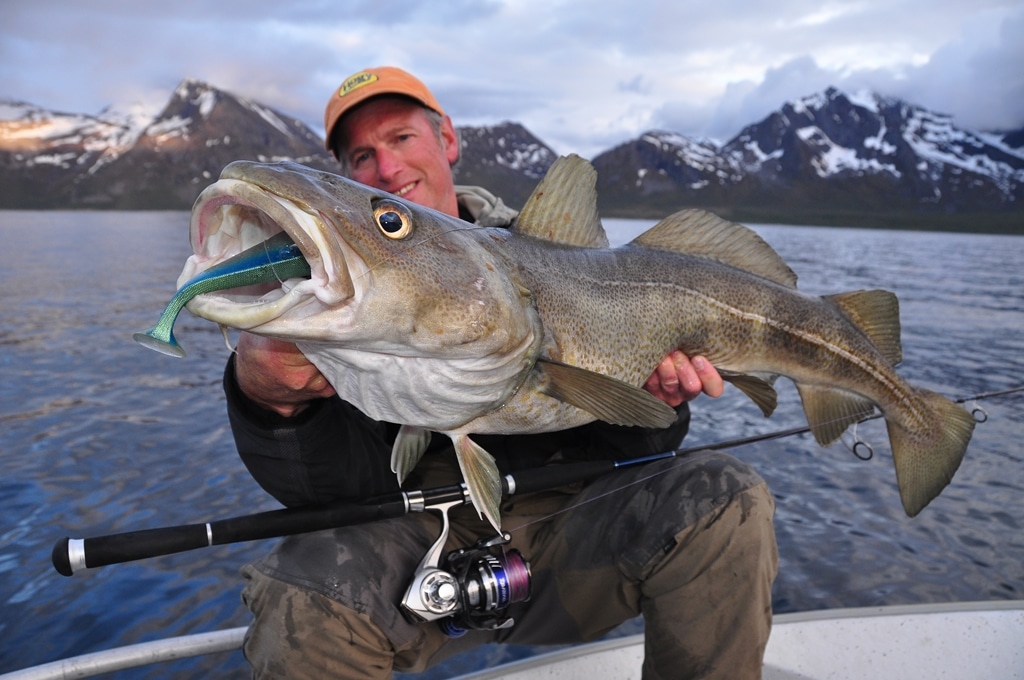
For larger cod, anglers will want to fish big tails, 10 inches or even larger in bright colors. I do well with these when simply reeling in slowly and stopping the retrieve once in a while. On a typical big-cod bite, you’ll feel a good tap followed by a slack line, when the fish inhales the shad in an upward motion. A cod of 35 or more pounds can bend a light rod to its limit, making an angler think he might have hooked a halibut!

Coalfish (Pollachius virens) are also very abundant along the coast. While you’ll find these small *sei *of 2 to 7 pounds pretty much anywhere, the bigger fish of 10 to 35 pounds or more can be harder to find, as they often stay farther offshore. But they migrate into coastal waters from June into September and offer unbelievable sport on spinning tackle! They’re as streamlined as tuna and fight similarly, never giving up until the very last. Hence, they’re often called the “tuna of the north.”

Fast predators, coalfish hunt in huge schools anywhere from the bottom to the surface. Speed-jigging with metal jigs can be very effective, but again, so is fishing with plastics — especially sand-eel imitators on a jig head of 30 to 80 grams (1 to 3 ounces). Work them much faster than you would for cod with some sudden stops after a couple turns of the handle. When hooked near the surface, coalfish may take off with lightning speed, making the reel scream.
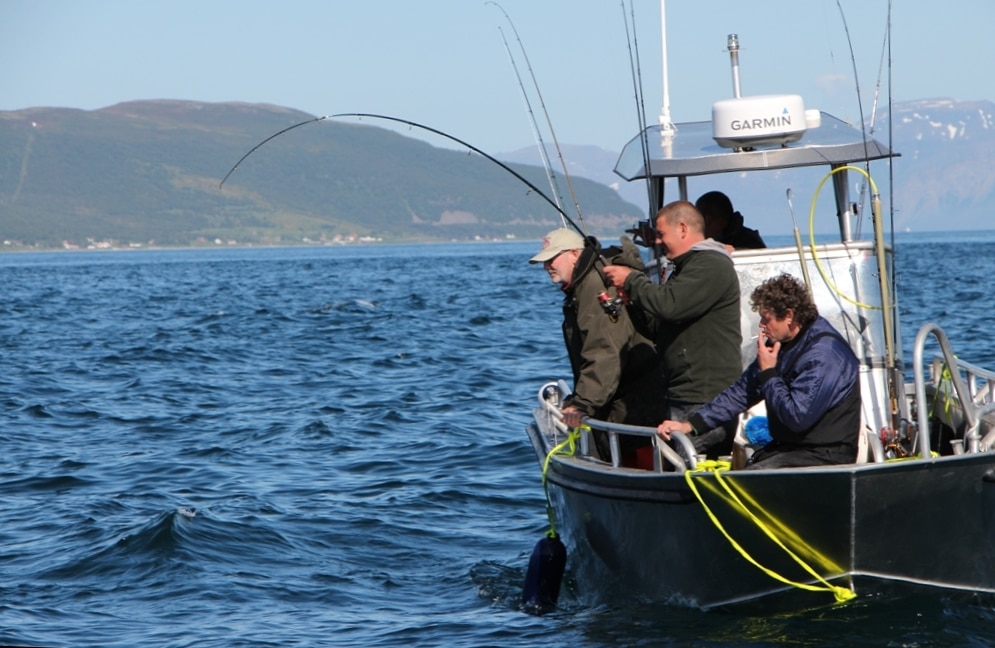
For many anglers, the Atlantic halibut represents the holy grail in these waters. Not only do they fight extremely hard, but halibut can grow to huge sizes, topping 450 pounds. Although with medium spinning tackle you can land surprisingly large halibut, if targeting the real monsters, I would advise heavier tackle.
Perhaps 20 years ago, catching a big halibut was often a matter of luck. But over the last two decades, specialized fishing for the species has become very popular, not only because numbers have grown the last decades (thanks to tighter restrictions on commercial fishing), but also because much more is known now of the behavior of halibut.

Although they spend much of their time in really deep water (especially in the colder months), from late May into October, they feed in much shallower water, sometimes no more than 30 feet deep. They like sandy bottoms which, devoid of significant structure, may be ignored by anglers watching the fish finder. But such areas, especially between 65 and 165 feet deep, surrounded by deep water, offer a good shot at big halibut.

Most people think these huge flounder spend most of their time on the bottom, but the opposite it true. Halibut are very active hunters, using the whole water column to feed, sometimes even at the surface. Fishing soft plastics in such areas can be very effective. More often than not, they’ll first follow your shad tail; you might feel some small taps when they bite the tail of the shad. In that case, it often pays to stop the retrieve for a few seconds. But sometimes they keep on attacking the tail, and adding a stinger hook can lead to more hook-ups.

One essential when halibut fishing: current. No current (no tide), and your chances for a hook-up will be slim. But once the tide starts running, it can be as if a switch has been turned on and you may hook several.
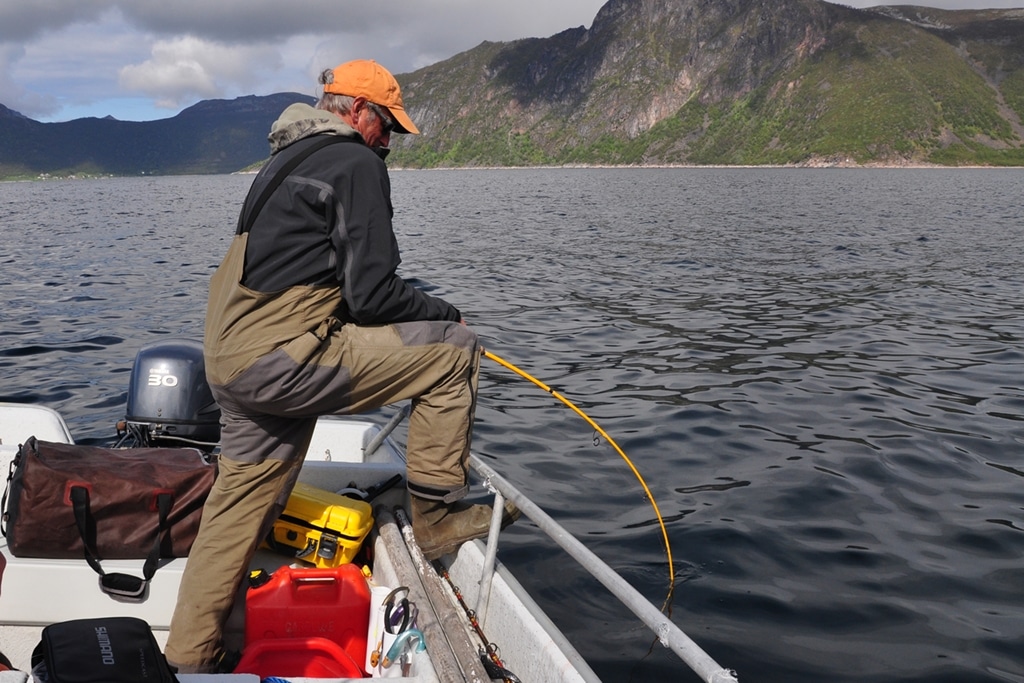
Even smaller halibut of 25 pounds can rip line off your spool in its initial run, so you can imagine what a bigger fish 60 pounds or more will do. Steady pressure usually wins the game, but patience is a virtue. Big halibut are often landed in Norway with a sturdy gaff and a rope slipped around the tail. Be extremely careful bringing into a boat any good-sized halibut; they’re likely to go berserk and can destroy rods and gear. But being so tough, they can as a rule readily be released unharmed.
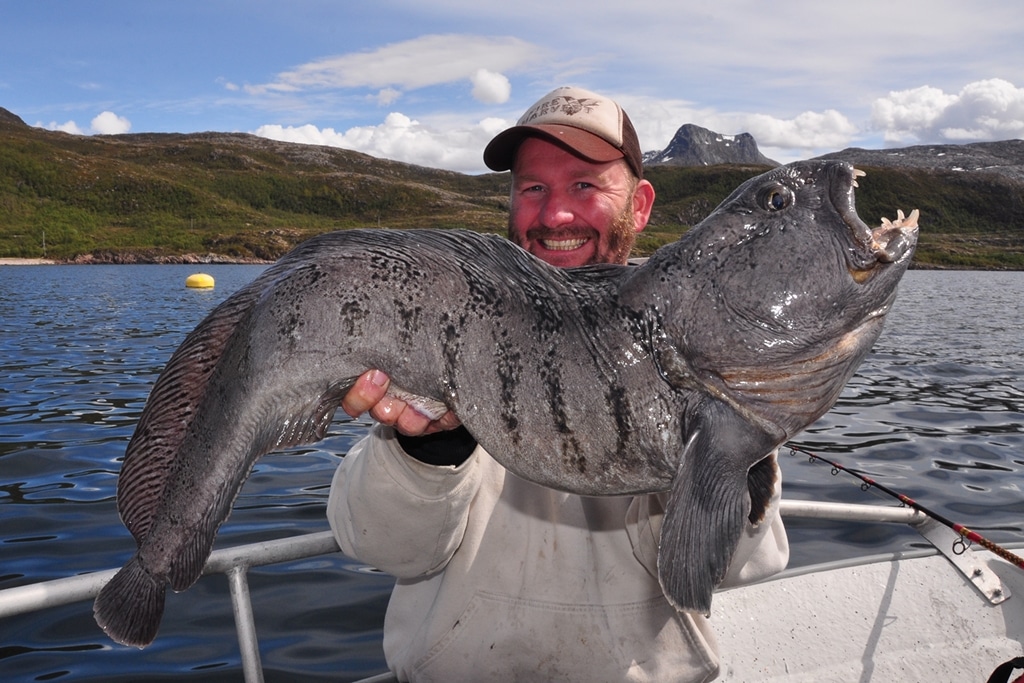
IF YOU ONLY FISH NEAR BOTTOM, AS A LOT OF PEOPLE USING HEAVY JIGS STILL DO), YOU’LL MISS NOT ONLY THE MAJORITY OF FISH, BUT MOST LIKELY THE BIGGER ONES.

Pollack (Pollachius pollachius) is an often-overlooked species, which is a shame, as this fish offers great opportunities for the light-tackle enthusiasts. A good bet is too look for shallow water near rocky islands or submerged rocky areas in 30 to 60 feet, with kelp nearby, with a good current. Cast a sand-eel tail on a 1- to 1 ½-ounce jig head to the rocks and work it very slowly.
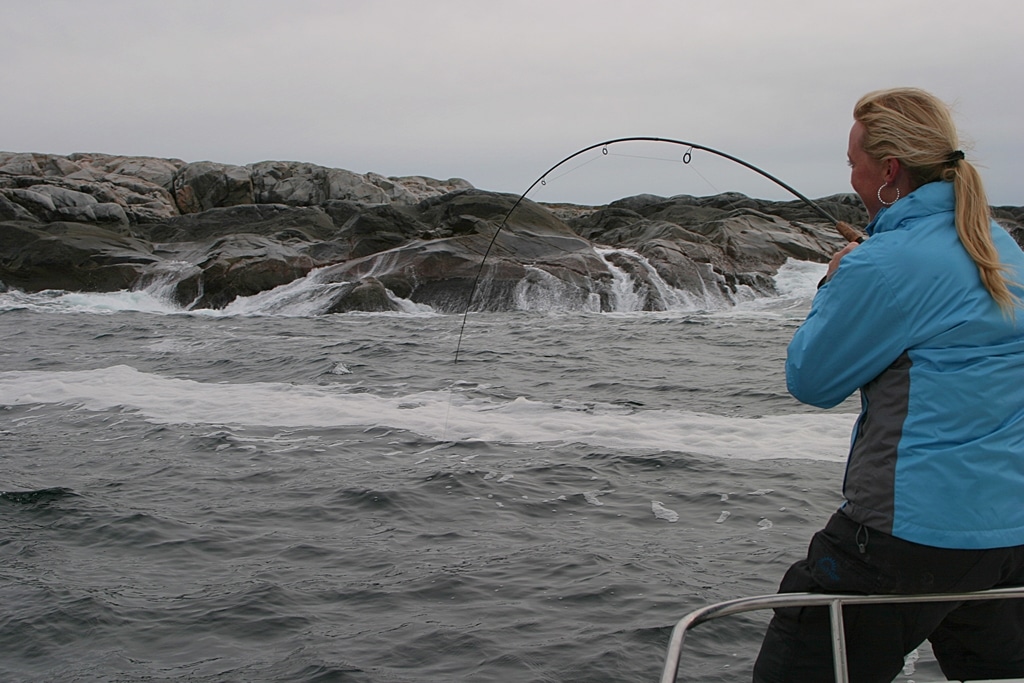
If you are a fly-fishing fanatic, you can even fish for them with streamers. One of my most memorable fishing days in Norway was a cold October day on the island of Hitra, fishing the outermost islands. We caught more than 100 pollack on light spinning tackle, many of them 10 to 20 pounds. Great fun amidst stunning scenery!
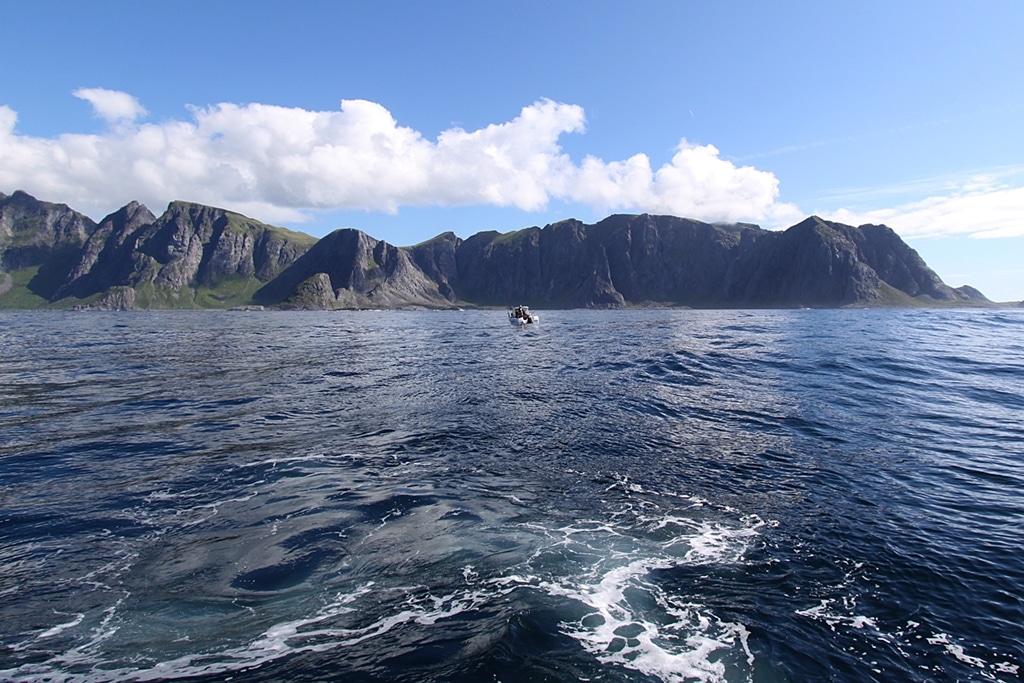
The wind can at times make it dangerous to go out to the open sea in small boats. But the thousands of islands and sheltered fjords along Norway’s 1,500 miles of coastline offer not only protection from the wind but also excellent fishing options. During my last trip, in June, to the beautiful island of Senja — also known as “little Norway” — we found the best fishing far inside the fjord, only a 10-minute ride from our vacation house. Two weeks of heavy westerly winds had pushed the baitfish deep inside the fjords, and they were followed by huge schools of coalfish, cod and halibut.

We discovered that out on the ocean there were hardly any baitfish to be seen over the big underwater plateaus, surrounded by deep water, which are normally a guarantee for big fish. So we fished inside the fjord, where baitfish often filled the sounder screen. We hooked one big coalfish and cod after the other, all on spinning tackle which we would normally use to fish for freshwater pike. It was so addicting that we went out fishing again after dinner, to come came back at 2 a.m. — with the sun still shining on the snow-covered mountain peaks surrounding the fjord.

All the species mentioned here are very good to eat, and of course it doesn’t do any harm to take some fish back for the evening meal, or some to freeze (up to 15 kilograms to take home by law) and take home. But killing all fish you catch is a waste when you catch so many. Fishing from a small boat you can often land fish by hand, without using a gaff, and releasing them unharmed is easy. Releasing coalfish and halibut presents little problem, even when they have been hooked in deep water.




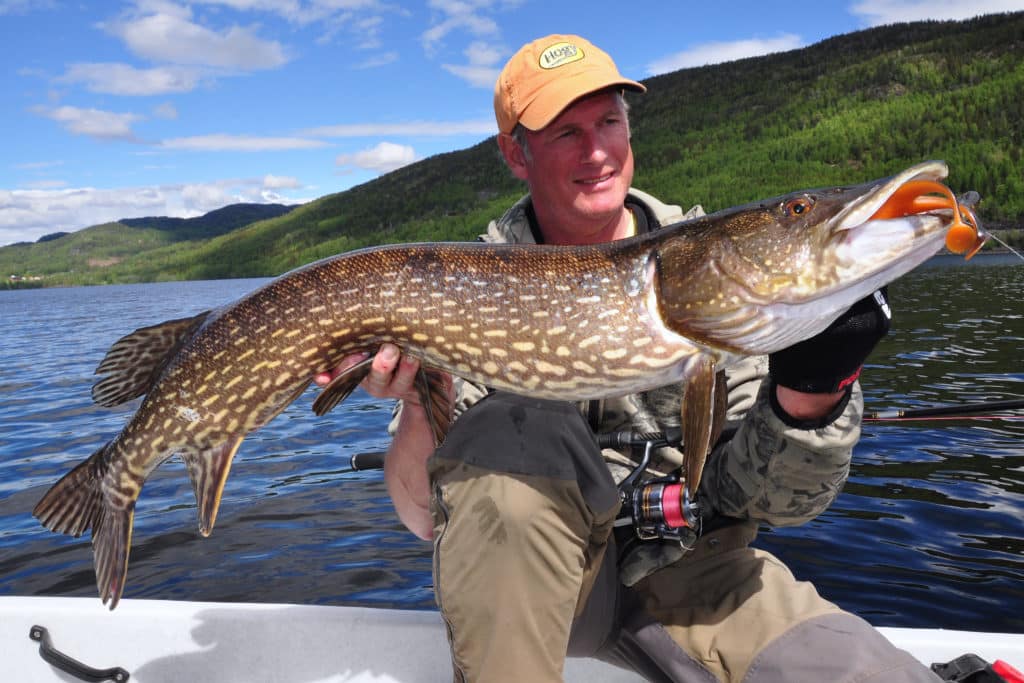
About the Author
Arnout Terlouw is a Dutch sport-fishing journalist with articles published in many leading magazines across Europe, the United States, South America, Australia and Malaysia, and is a contributor to sportfishingmag.com. As a fishing-travel consultant, Terlouw works with specialized international fishing-travel companies. While he has traveled the world to amazing and remote places like West Papua in Indonesia, he still loves fishing in Norway, which he has done annually for nearly two decades — fishing the Atlantic but also the deep fjord lakes, casting for giant northern pike. Casting with lures is Terlou’s passion, something he can do 24 hours a day. You can contact him by email at arnout.terlouw@kpnplanet.nl.








